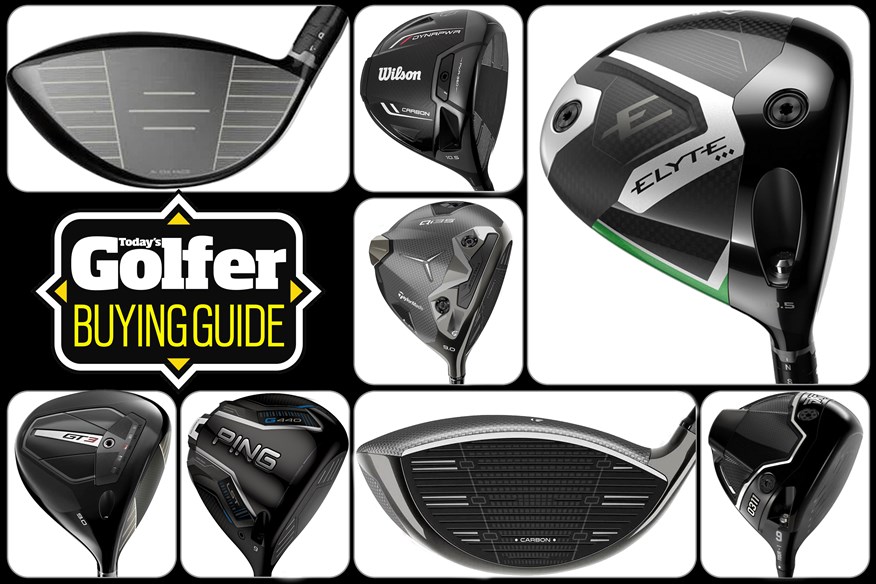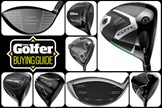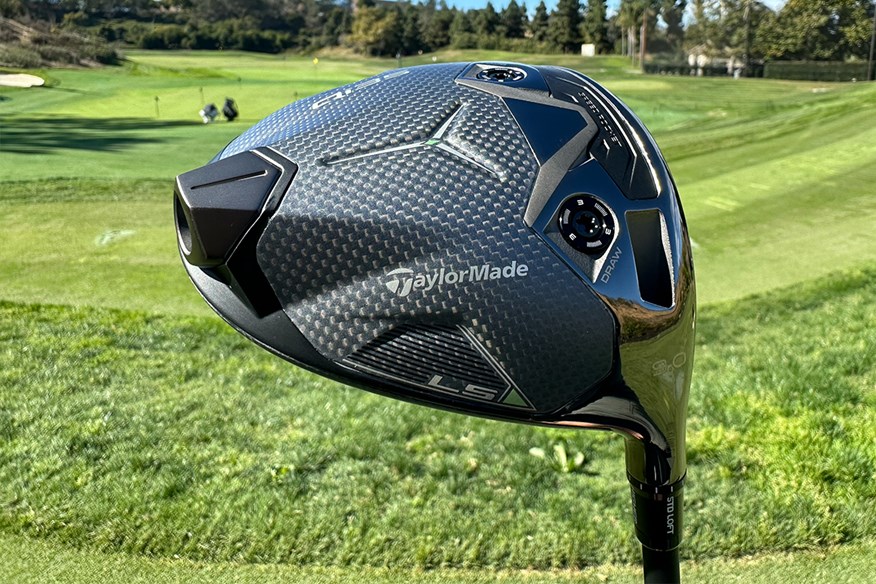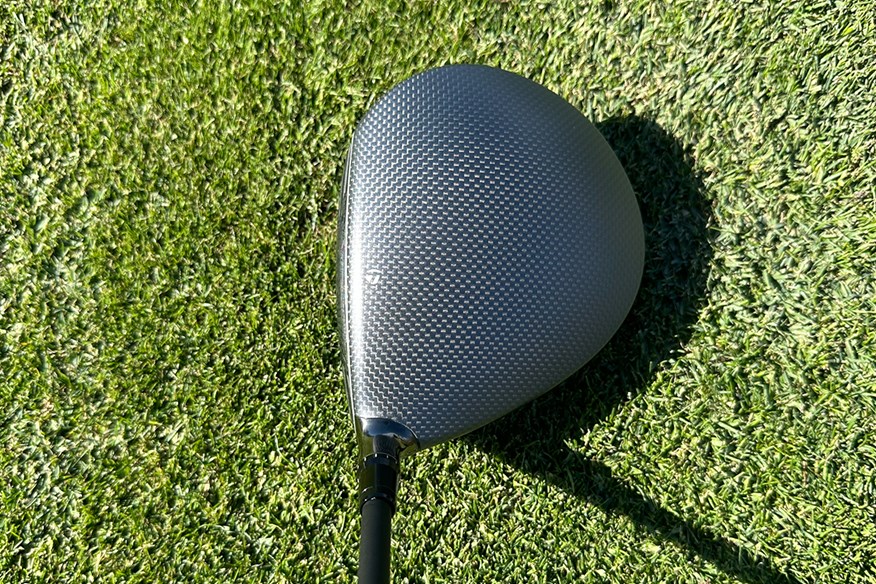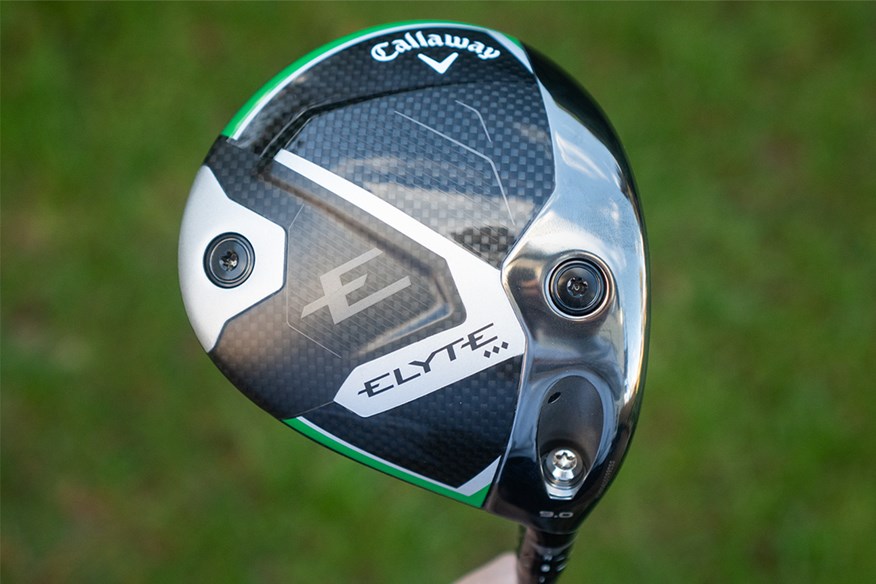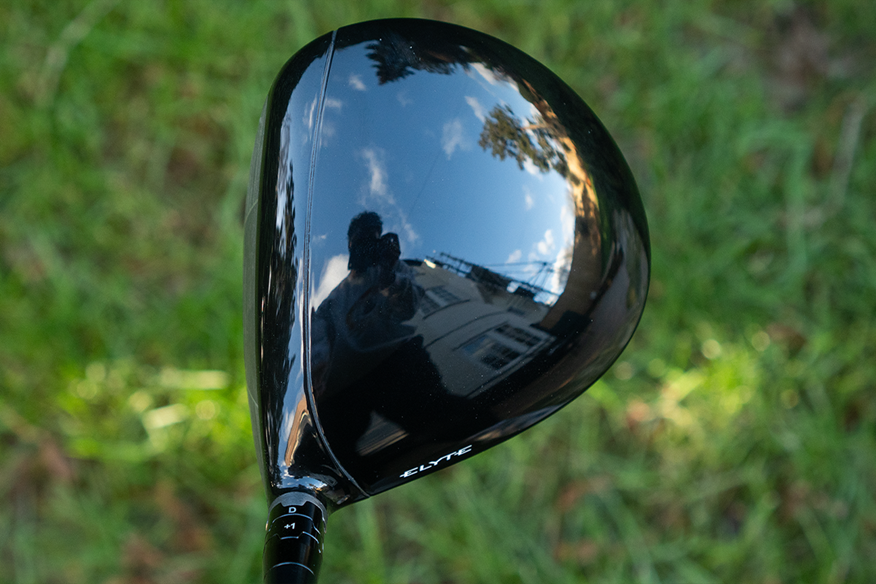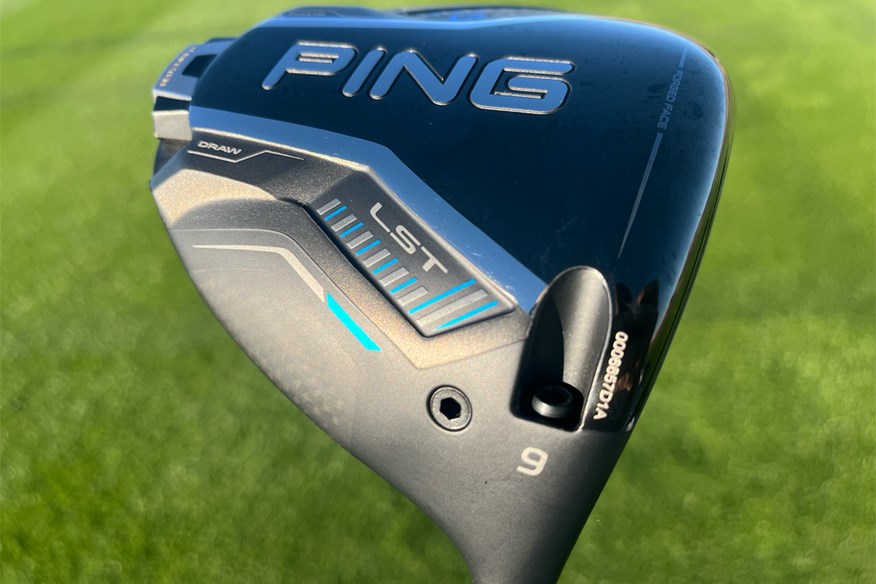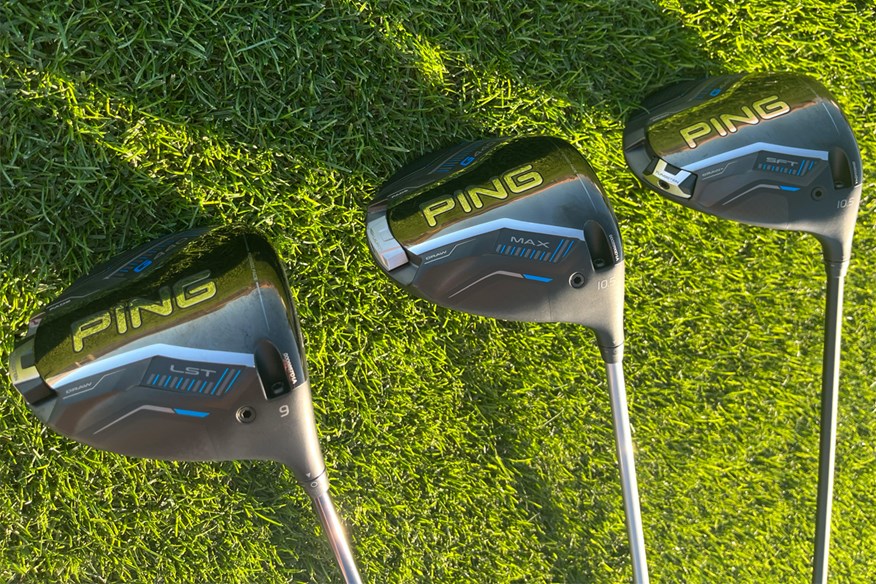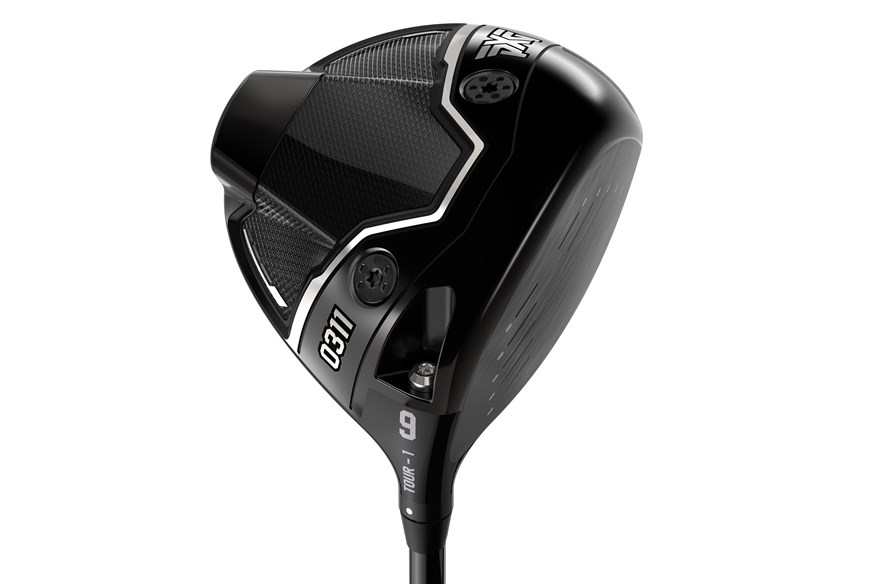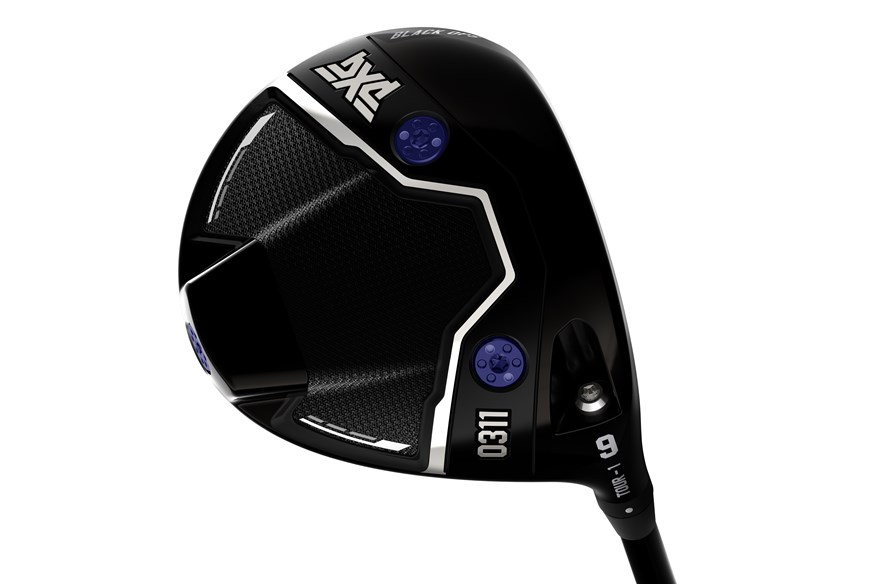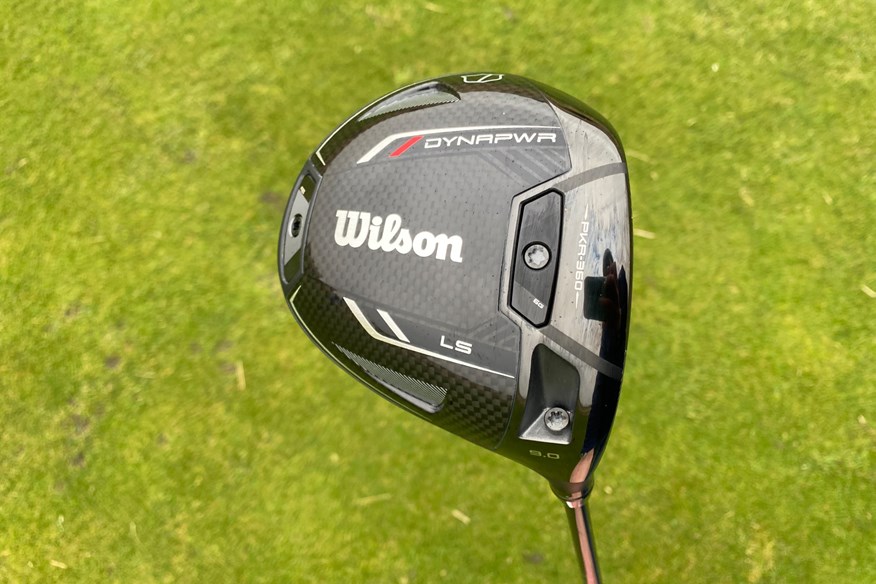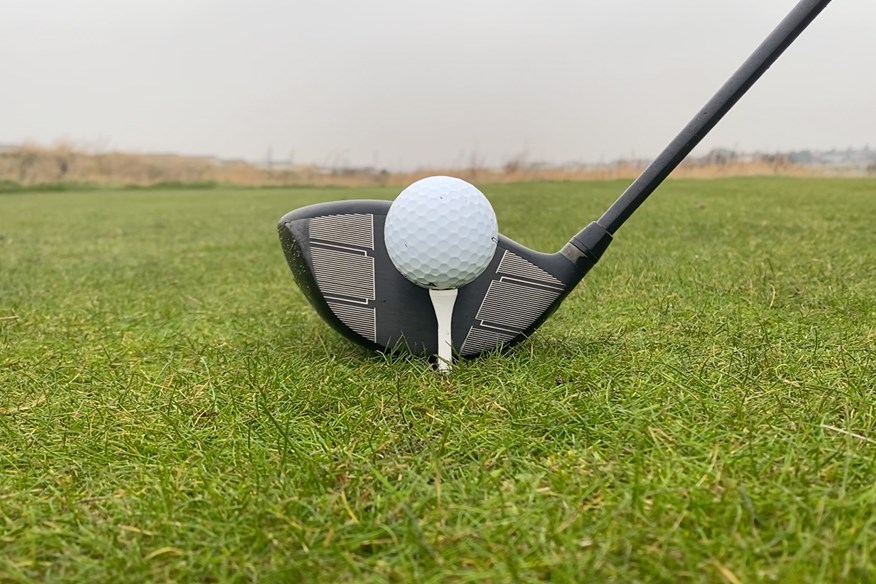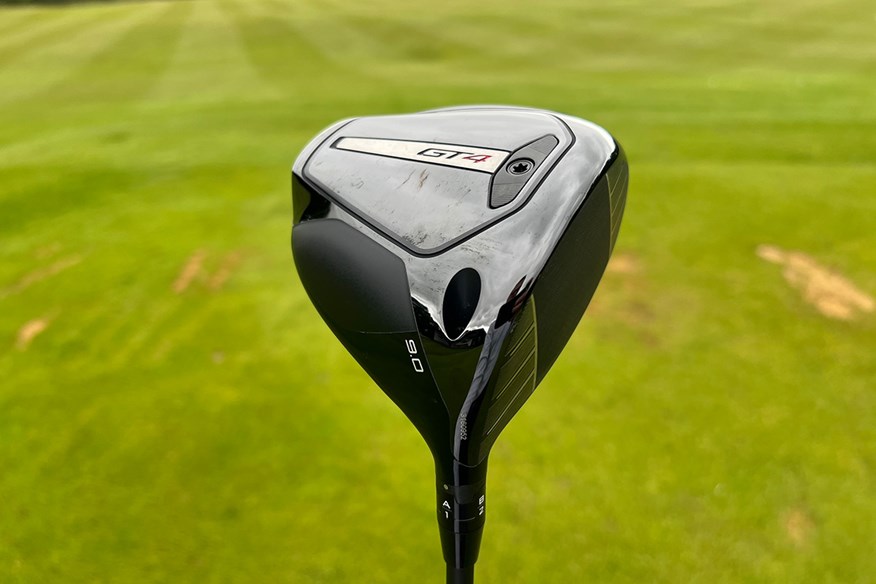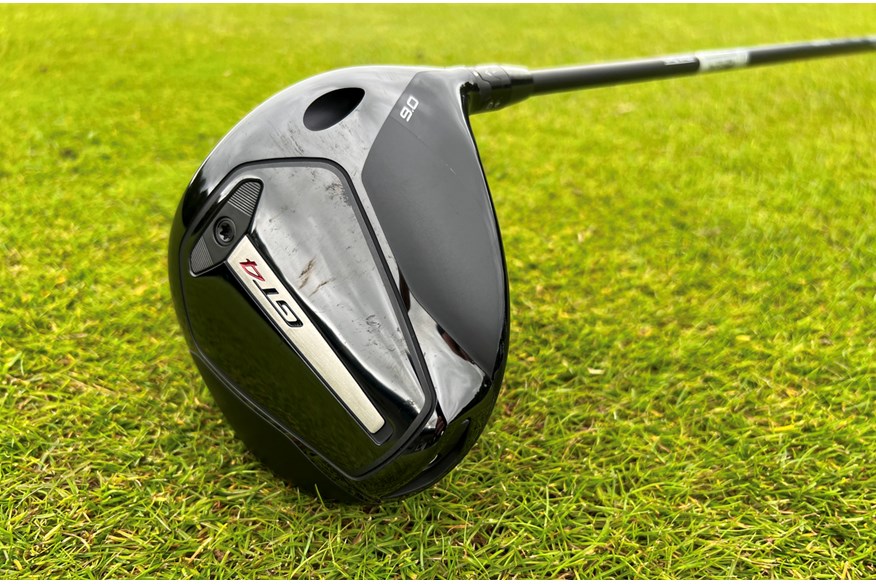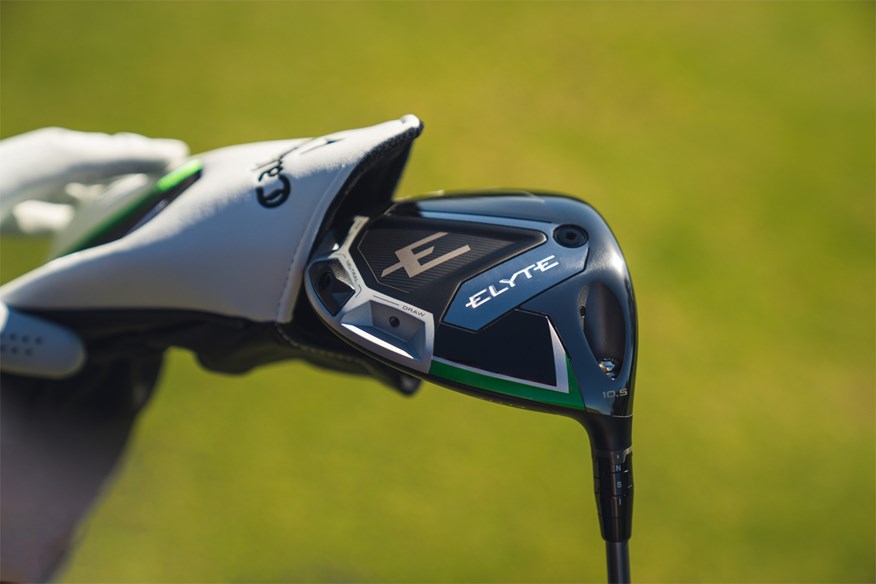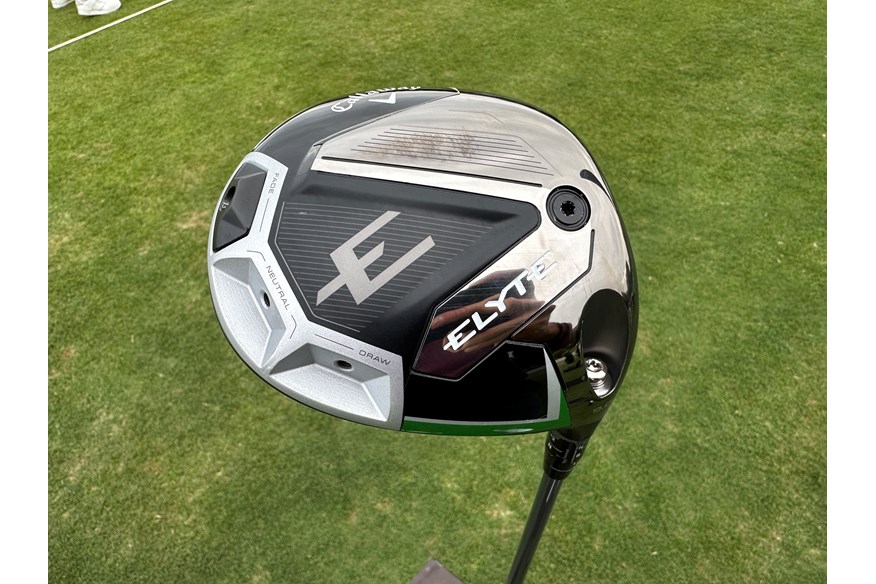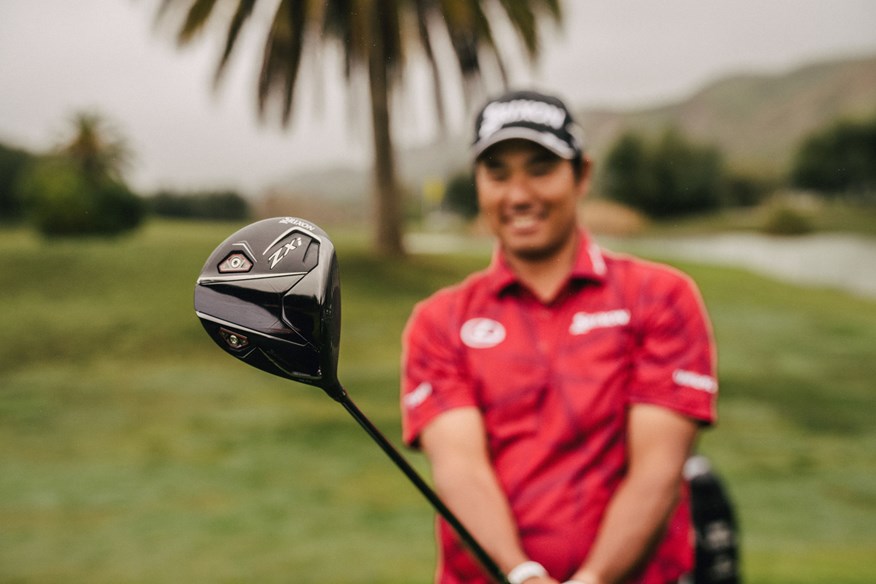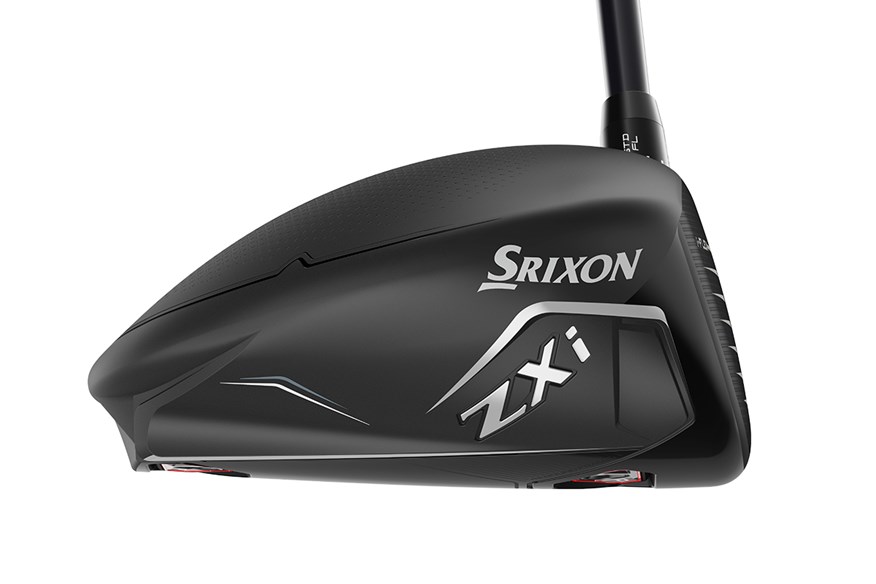Best Low Spin Drivers 2025: The top low-rev rockets backed by our Head-to-Head data
Last updated:
What are the best low-spin golf drivers in 2025? Today’s Golfer runs the numbers and reveals our spin-suppressing shortlist for players looking to maximize distance.
Best Low-Spin Drivers – Jump To:
The fastest-swinging players aim to capitalize on their physicality by squeezing out every last yard from the tee box, and unsurprisingly, selecting the best driver for the task is paramount. For this type of player who can generate high balls over 160 mph, reducing backspin can help maximize distance, leaving them with a shorter and more accurate club in their hand for the approach shot.
Whether your driver’s face has 8° of loft or 12°, backspin will be generated immediately after impact, with greater spin rates lifting your ball higher and creating steeper landing angles. Conversely, lower spin rates result in more penetrating ball flights with lower peak heights and shallower landing angles. However, without sufficient swing speed and the ability to manipulate launch angle by hitting up on the ball, a low spin driver can have the unintended consequence of causing your ball to fall out of the sky prematurely.
Best at a glance:
Best for low-spin: Callaway Elyte Triple Diamond | Buy Now
Best for distance with forgiveness: PING G440 LST | Buy Now
Despite an improved balance of distance and forgiveness in the latest models, low-spin drivers tend to punish off-center strikes more severely than the most forgiving drivers on the market. With front-weighted and compact clubheads that are less stable through impact, low-spin drivers are aerodynamic yet unforgiving, rewarding only the most consistent of ball strikers. For this reason, beginner and high-handicap golfers will likely get more bang for their buck by opting for the manufacturer’s higher-launching and forgiving alternative to the model used by their tour staffers.
That said, R&D wizards behind the scenes are constantly innovating and integrating the latest technologies and AI-assisted engineering processes to ramp up forgiveness levels within their longest-launching rockets. Some of the most forgiving low-spin drivers in 2025 push MOI toward 8000 g/cm2 while suppressing spin to less than 2500 RPM (read more about MOI and RPM in our buying guide). This previously unseen balance is proving increasingly popular with a high caliber of golfers who appreciate a touch more insurance on imperfect strikes without compromising distance.
To help you make the most informed buying decision we have independently tested the drivers considered to be ‘low-spinning’ by their manufacturers in 2025. Our test pro’s results can be viewed in the data table, which has narrowed down our shortlist below, where you can read driver summaries from TG’s Equipment Editor – Alex Lodge with links to full reviews for everything you need to know. And don’t forget to complement your decision by pairing your new low-spin driver with one of the best premium golf balls too.
Best Low-Spin Drivers 2025:
A low launch and low spin weapon
With the fastest ball speed and carry of all of these drivers, the TaylorMade is certainly the driver to beat in 2025. The spin was only 54 RPM lower than the lowest spinning driver in this test, making this a suitable weapon to the player who is desiring a fast penetrating ball flight to improve their game. Be warned though, with low spin comes low forgiveness.
TG Test Pro Data :
Ball Speed 167.0 mph | Carry 298.0 yards | Spin (Total) 2,256 rpm | Launch Angle 13.0º | Height 38.2 yards | Descent Angle 40.3º | L-R Dispersion 23.3 yards
Read our full TaylorMade Qi35 LS driver review.
Pros
- Low spin across the entire face with new CG projection.
- Premium adjustability for adjusting ball flight
- Infinity crown with chromium carbon makes this a stunner for all golfers
Cons
- A great driver, just be aware it's the least forgiving model in the Qi35 family.
| Lofts | 8º (RH), 9° / 10.5° (RH/LH) |
| Stock shafts | Mitsubishi Kai’Li Blue DarkWave CB 60g / Mitsubishi Kai'Li White DarkWave 60g |
| Stock grip | Golf Pride Z-Grip Black/Silver |
Callaway's smart-faced and low-spinning offering for 2025.
If you do fit the bill and your game is based on consistent hitting at high speeds, our test data highlights the TD as a brilliant performing low spin driver in 2025. It just misses out on the fastest ball speed and longest carry, but it does have the lowest spin out of all the driver models tested which effectively tops the rankings for this article. The Callaway Elyte driver is a great alternative if you want some added forgiveness to a premium, high-performing driver.
TG Test Pro Data:
Ball Speed 165 mph | Carry 290.8 yards | Spin (Total) 2,202 rpm | Launch Angle 11.6º | Height 32.3 yards | Descent Angle 36.9º | L-R Dispersion 33.7 yards
Read our full Callaway Elyte Triple Diamond Driver review.
Pros
- The Smart Face concept is a really clever idea to tailor drivers more to your game.
- Expect a good-looking, fast, and lovely-sounding driver.
- Lowest spin driver of 2025
Cons
- Remember this is the least forgiving driver in the Elyte family.
| Lofts | 8º, 9º, 10.5º |
| Stock shafts | Aretera EC1 Blue, Mitsubishi Chemical Tensei 1k Black, True Temper Denali Charcoal |
| Stock grip | Golf Pride Tour Velvet 360 |
A strong blend of low spin performance and on-course playability.
On our spreadsheet the G440 LST was the 5th fastest in ball speed and carry, which is an improvement on 2024. The L-R dispersion was exceptional, coming in 2nd place to the Wilson Dynapower LS. The spin wasn't the lowest, but we with some tweaking to the adjustable weights and hosel this could be amended. This is a driver that can be used by any golfer in 2025, and with the G440 family itself offering an array of positive elements, we envisage this to be one of the most popular drivers by the end of the year.
TG Test Pro Data :
Ball Speed 164.7 mph | Carry 289.8 yards | Spin (Total) 2,502 rpm | Launch Angle 13.7º | Height 41.6 yards | Descent Angle 43.8º | L-R Dispersion 17.7 yards
Read our full PING G440 LST Driver review.
Pros
- With an MOI of over 9K the G440 LST is just about the most forgiving driver money can buy.
- A solid balance of distance, forgiveness, and low spin performance.
- Exceptional sound and feel.
Cons
- The busy crown may be distracting for some.
| Lofts | 9º, 10.5º |
| Stock shafts | Ping Alta CB (counter-balanced) Blue 55 (SR, R, S); Ping Alta Quick 35/45 (HL build only) |
| Stock grip | Golf Pride Tour Velvet 360. |
Low-spinning high performing head with breakthrough technology.
In our testing, we found the PXG offered a lot of adjustability for the everyday golfer. The numbers didn't blow us away, with 164.5 ball speed and 282 yards of carry being slightly above average for the testing session.
TG Test Pro Data (weight forward):
Ball Speed 164.5 mph | Carry 286.2 yards | Spin (Total) 2,204 rpm | Launch Angle 11.2º | Height 30.4 yards | Descent Angle 36.8º | L-R Dispersion 25.4 yards
Read our full PXG Black Ops Tour-1 Driver review.
Pros
- The Black Ops Tour-1 is PXG's most complete high-performance driver to date.
- The unique launch characteristics will help mishit performance.
Cons
- Not the most forgiving head so might not suit many average golfers.
| Lofts | 8° / 9° / 10.5° / 12° (LH: 9°) |
| Stock shafts | EvenFlow Riptide CB, PX Cypher, MCA Diamana S+, ProjectX HZRDUS Smoke Yellow, MCA Tensei AV Raw Blue, MCA Tensei AV Raw White, Aldila NVS Pink NXT |
| Stock grip | PXG Z5 Black |
Low spin with seriously impressive accuracy
With the weight at the front of the head, the Wilson Dyanpower LS had an impressive spin at 2,228 RPM, but what impressed us the most was the L-R dispersion at 13.6 yards, beating the rest of the competition by quite some distance. It's quite rare to find a driver that offers low-spin and forgiveness in tandem, yet Wilson has managed to create this in their LS model for 2025.
TG Test Pro Data:
Ball Speed 162.2 mph | Carry 286.4 yards | Spin (Total) 2,228 rpm | Launch Angle 12.8º | Height 35.1 yards | Descent Angle 39.6º | L-R Dispersion 13.6 yards
Read our full Wilson Dynapower LS Driver review.
Pros
- Ultra low spin with added forgiveness
- Good value for money
- Gorgeous shelf appeal
Cons
- Not an exciting model
| Lofts | 8°, 9°, 10.5° |
| Stock shafts | True Temper Denali Black 60 |
| Stock grip | Lamkin Crossline 360 Black |
Designed for low-spin
The Titleist GT4 performed well in the hands of our testing pro, coming in 3rd for overall distance and in the top 5 for low-spin, with 2,274 RPM when the weight is forward. The L-R dispersion was average at best, leading us to recommend the Titleist GT3 over GT4 to most golfers. That being said, if you are a fan of a smaller profile, this is hard to shy away from.
TG Test Pro Data:
Ball Speed 165.1 mph | Carry 292.1 yards | Spin (Total) 2,274 rpm | Launch Angle 12.9º | Height 37.1 yards | Descent Angle 39.9º | L-R Dispersion 33.3 yards
Read our full Titleist GT4 Driver review.
Pros
- A ball speed monster when struck well
- Lowest spinning model for Titleist
- Taller face at 430cc will suit better-player eyes
Cons
- Smaller head means a smaller sweetspot
| Lofts | 8° / 9° / 10° (RH/LH) |
| Stock shafts | Project X Denali Red / Mitsubishi Tensei 1K Blue / Project X HZRDUS Black 5th Gen / Mitsubishi Tensei 1K Black |
| Stock grip | Titleist Universal 360 Grip |
A core model with speed and capabilities for low spin
All data results were right at the top, and with adjustability to match with a movable weight tracking system in the back of the head, this driver can boast unparalleled speed for the amateur golfer if they are custom fitted. The new Ai10x face offers some impressive ball speed across the entire face, and we've seen great results from a variation of different swing speeds. The only element that lets this driver down is the overall aesthetics.
TG Test Pro Data (weight forward):
Ball Speed 165.3 mph | Carry 283.3 yards | Spin (Total) 2,692 rpm | Launch Angle 11.4º | Height 35.7 yards | Descent Angle 40.8º | L-R Dispersion 26.1 yards
Read our full Callaway Elyte Driver review.
Pros
- Fast and forgiving
- distance gains over previous models
- Confidence inspiring crown, premium sound
- Can be lower spinning with adjustability settings
Cons
- Shelf appeal could be improved
| Lofts | <strong> </strong>8º, 9º, 10.5º |
| Stock shafts | Aretera EC1 Blue, Mitsubishi Chemical Tensei 1k Black, True Temper Denali Charcoal |
| Stock grip | Golf Pride Tour Velvet 360 |
Designed to deliver total control and workability off the tee.
As simple-looking players’ drivers go, the ZXi is right up there alongside the very best. The numbers it produced aren’t ground-breaking but they are solid and it's important to remember that this driver could top your rankings, even though it didn't top ours. The spin and clubhead speed was impressive, but with the weight forward it was difficult to control the L-R dispersion, coming second last in this category.
TG Test Pro Data:
Ball Speed 164.4 mph | Carry 289.4 yards | Spin (Total) 2,365 rpm | Launch Angle 12.7º | Height 37.2 yards | Descent Angle 41.7º | L-R Dispersion 46.8 yards
Read our full Srixon ZXi LS driver review.
Pros
- A solid and well-rounded low spin driver.
- Highly workable.
- great feel
Cons
- Falls short on forgiveness
| Lofts | 8º (RH), 9° (RH/LH), 10.5º (RH) |
| Stock shafts | Project X HZRDUS Black Gen 5 60g and 70g |
| Stock grip | Golf Pride Tour Velvet 360 |
Best Low Spin Drivers 2025: The Data
Below is the data from our independent testing of the best low-spin drivers in 2025. Only the best ranked for low backspin have made our shortlist above, however, you can read about all the other models in our golf club review pages.
| Manufacturer | Model | Loft (°) | Clubhead Speed (mph) | Ball Speed (mph) (+/- SD) | Carry Distance (yds) (+/- SD) | Spin Total (rpm) (+/- SD) | Launch Angle (°) | Height (yds) | Descent Angle (°) | L-R Dispersion (yds) |
| TaylorMade | Qi35 LS (Forward) | 10.5 | 119.1 | 167.0 (1.3) | 298.0 (8.1) | 2,256 (397) | 13.0 | 38.2 | 40.3 | 23.3 |
| Titleist | GT3 | 10.0 | 117.3 | 165.7 (1.0) | 292.8 (3.1) | 2,378 (186) | 13.0 | 38.9 | 41.6 | 25.2 |
| Titleist | GT4 (Forward) | 10.0 | 116.6 | 165.1 (1.3) | 292.4 (6.0) | 2,274 (363) | 12.9 | 37.1 | 39.9 | 33.3 |
| Callaway | Elyte Triple Diamond (Forward) | 10.5 | 116.5 | 165 (1.5) | 290.8 (6.7) | 2,202 (323) | 11.6 | 32.3 | 36.9 | 33.7 |
| Wilson | DynaPower Carbon (Forward) | 10.5 | 11.7 | 165.2 (2.6) | 289.9 (8.3) | 2,442 (478) | 12.8 | 38.1 | 42.0 | 44.3 |
| Ping | G440 LST | 10.5 | 115.6 | 164.7 (2.1) | 289.8 (5.4) | 2,502 (311) | 13.7 | 41.6 | 43.8 | 17.7 |
| Srixon | ZXi LS (Forward) | 10.5 | 117.6 | 164.4 (1.0) | 289.4 (4.4) | 2,365 (191) | 12.7 | 37.2 | 41.7 | 46.8 |
| Cobra | DarkSpeed- Adapt LS (Forward) | 10.5 | 117.9 | 164.4 (2.2) | 287.1 (6.4) | 2,504 (414) | 13.3 | 39.9 | 42.7 | 34.8 |
| Wilson Staff | DynaPower LS (Forward) | 10.5 | 114.6 | 162.2 (1.9) | 286.4 (4.7) | 2,228 (194) | 12.8 | 35.1 | 39.6 | 13.6 |
| PXG | Black Ops Tour (Rear) | 10.5 | 114.8 | 162.9 (2.5) | 286.4 (11.1) | 2,126 (594) | 12.6 | 33.1 | 38.4 | 45.6 |
| PXG | Black Ops Tour (Forward) | 10.5 | 112.5 | 164.5 (1.6) | 286.2 (5.2) | 2,204 (293) | 11.2 | 30.4 | 36.8 | 25.4 |
| Callaway | Elyte Triple Diamond (Rear) | 10.5 | 116.1 | 164.2 (1.5) | 286.2 (6.3) | 2,516 (310) | 12.8 | 38.3 | 41.7 | 25.7 |
| TaylorMade | Qi35 LS (Rear) | 10.5 | 117.4 | 165.6 (1.5) | 284.6 (6.8) | 2,715 (466) | 11.9 | 37.6 | 42.0 | 39.0 |
| Cobra | DarkSpeed- Adapt LS (Rear) | 10.5 | 117.4 | 165.2 (2.2) | 284.2 (3.9) | 2,778 (142) | 12.3 | 39.8 | 43.3 | 32.1 |
| Callaway | Elyte | 10.5 | 117.3 | 165.3 (0.6) | 283.3 (6.7) | 2,692 (443) | 11.4 | 35.7 | 40.7 | 26.1 |
| Srixon | ZXi LS (Rear) | 10.5 | 116.4 | 161.8 (2.5) | 282.6 (5.2) | 2,337 (172) | 11.8 | 33.3 | 39.4 | 33.0 |
| Wilson Staff | DynaPower LS (Rear) | 10.5 | 114.6 | 161.6 (1.3) | 282.1 (2.0) | 2,408 (229) | 12.9 | 36.8 | 41.4 | 15.9 |
| Titleist | GT4 (Rear) | 10.0 | 117.2 | 163.1 (2.0) | 277.7 (13.2) | 2,876 (558) | 12.8 | 39.7 | 43.5 | 50.9 |
*All lofts at 10.5° unless otherwise stated.
How we tested the drivers
We asked the leading brands to send us their 2025 drivers in our Test Pro Neil Wain’s specs.
We created an indoor test lab at Keele Golf Centre to ensure a controlled environment, which meant we could use premium TaylorMade TP5x golf balls and a Foresight GC Quad launch monitor to create the most reliable data possible. We rejected major misses but recorded how shots launched, spin, peaked out, and how far they flew in which direction.
See more about how TG tests golf clubs and other equipment.
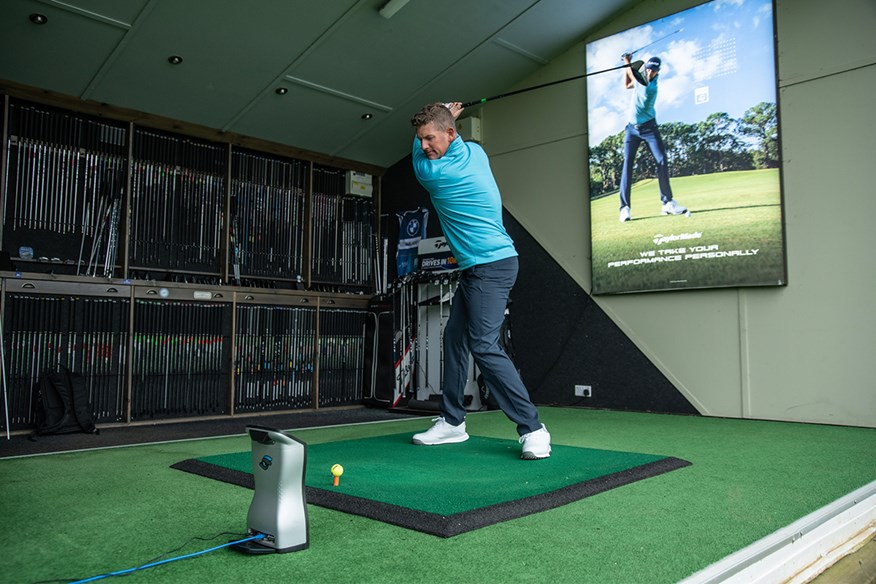
Best Low-Spin Drivers: Buying Guide
Choosing a new driver should be a decision you take some time over, to research thoroughly and make sure that you are investing in the club that will take your game to the next level. That’s critical for every player, particularly as second to your putter, the driver should be the club you reach for the most. Regarding low-spin models specifically, here are the key things to consider when deciding which big stick will eke out the most yards for you.
Ball speed
Not surprisingly, ball speed is a key consideration as without evidence the club can produce higher speeds than more forgiving models, then you are onto a lose-lose. The smaller footprints and aerodynamic designs of low-spin drivers permit higher swing speeds enabling increased energy transfer through the ball, leading to greater carry distances. Knowing a low spin driver has a more aerodynamic design is one thing, but seeing it translate into more ball speed is what matters, which is why we always suggest collecting independent launch monitor data on the range or via a custom fitting session.
RPM
RPM stands for ‘revolutions per minute’ and is the measurement used to quantify rotational speed such as how much backspin has been applied to a golf ball immediately after impact. Unlike MOI, spin rate is not fixed and is highly individualized with every player delivering the club differently through the ball. As an example, our test pro didn’t always see a reduced spin or notably higher ball speeds when hitting the Callaway Elyte Triple Diamond model compared to the Callaway Elyte, this going to show why purely going off model names without running your numbers can be a mistake. The average spin rate for drivers on the PGA Tour is in the region of 2700 RPM.
MOI
A term sprayed around in the golf world more than your wayward tee shots. But what does it mean and why is MOI important? Forgiveness is quantified using MOI (moment of inertia), measured in grams per centimeter squared, and defines how resistant the club face is to twist on impact. Low spin models are the least stable as weight is distributed forward in the clubhead to maximize energy transfer through impact. While you will not find low-spin models with MOIs as high as the forgiving counterparts, they are becoming increasingly competitive, with some models getting close to 8000 g/cm2.
Adjustability
Having the ability to tinker with loft and lie is something that can pay dividends for all levels of golfer, and as such is now commonplace in the latest driver releases. This adjustability enables you to achieve launch angles and spin rates that best suit how you deliver the club through the ball. Further, drivers with interchangeable weight ports or sliding weight mechanisms are handy if you want to customize ball flights with a draw or fade bias, straightening up or accentuating your natural shot shape.
Custom fitting
Dialing in your optimal set-up with a custom fitting session is important for all equipment, but imperative when considering buying a low-spin model due to its nuanced high-performance nature. A host of variables contribute to optimizing a driver’s potential, and only through objective measurements on a launch monitor will you understand the setup that will enable you to extract the results you intended.
Budget
As with most things in the golf world, prices for drivers can vary considerably. Value for money is subjective and therefore you should spend however much you feel comfortable with, be it a premium model, or one with a more competitive price point. Being the highest-performance model within a driver range, low-spin tech-packed drivers are generally more expensive than their more forgiving counterparts. Powerhouse driver brands such as Ping, TaylorMade, and Callaway will typically be positioned at the top end of the market, however, there is excellent value (with performance) to be found with other brands such as Cobra, Wilson, and PXG.
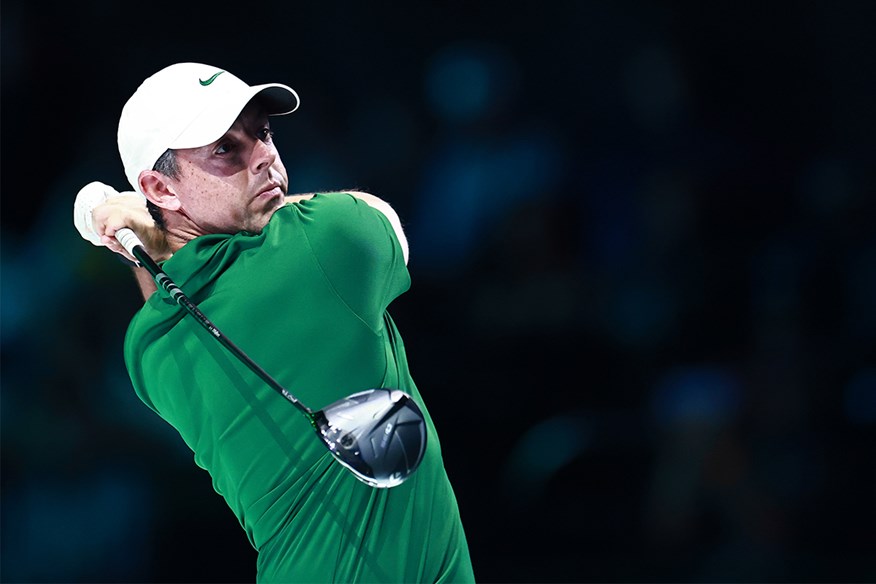
Best Low-Spin Drivers: FAQs
What does low spin on a driver do?
Low-spin drivers are designed for fast-swinging players who require the ball to penetrate through the air with moderate launch and optimal roll-out. It’s important to ensure you have sufficient ball speed if you are considering a low-spin driver, otherwise, the ball could drop prematurely, resulting in lower carry distances than your swing deserves.
Can a driver be too low spin?
Absolutely. Whilst players with very fast swings normally benefit from reducing spin rates to maximize distance, drives with too little spin tend to fall out of the sky sooner, thus reducing carry distance and total yardage. Depending on your swing speed and ball speed, there will be an ideal launch angle and spin rate that provides the maximum distance for you. This is why getting custom-fitted for a new driver is essential.
Which low-spin driver hits the furthest?
The longest low-spin driver for one golfer may not be the longest for another, so doing your own testing is always recommended. Today’s Golfer has found the Callaway Paradym Ai-Smoke Triple Diamond, TaylorMade Qi10 LS, Titleist TSR4, and Cobra Darkspeed LS to be among the longest low-spin golf drivers when tested in the hands of a pro.
What is MOI?
MOI is a term used in physics to objectively describe how much resistance an object has to turn about its axis. It stands for ‘Moment of Inertia’ and is used by golf club manufacturers to measure the resistance a clubhead has to twist throughout impact. The higher the MOI, the more stable the club is deemed to be. Scores in the region of 10,000 g/cm2 provide the very highest levels of stability and are generally better suited to beginners and high-handicappers.
What driver does Rory McIlroy/Tiger Woods use?
Every day golfers like to use the same equipment as the tour pros, which is one of the main reasons manufacturers spend millions of pounds on equipment contracts to secure the game’s biggest names to play their brand. But it’s important to remember that what’s best for Rory McIlroy, Tiger Woods, or any other elite tour pro, may not necessarily be the best driver for you. Elite tour pros boast swing speeds of over 115mph, which not many club golfers can match.
Subscribe to Today’s Golfer Magazine! In every issue there are exclusive interviews with star players, equipment tests and buying advice, PGA pro tips to you help you shoot lower scores and our highly regarded Top 100 course rankings from around the world.
VIEW SUBSCRIPTION OFFERS
